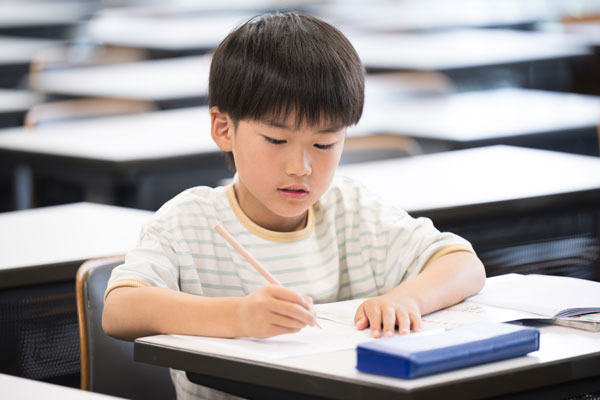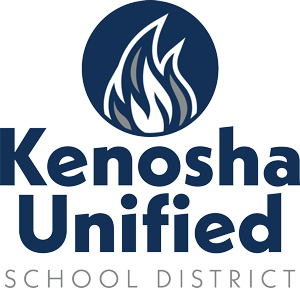Third Grade Academics

English Language Arts
Standards
- Wisconsin English Language Arts Standards (Revised 2020)
Resources
Third Grade Units
| Quarter 1 | Quarter 2 | Quarter 3 | Quarter 4 | |
| Reading | Study of
Realistic Fiction |
Reading to Learn: Grasping Main Ideas
and Text Structures Return to Fiction: Teacher Choice |
Character Studies | Learning About
a Topic Through Reading |
| Writing | Personal Narrative | Art of
Informational Writing |
Opinion Writing | Fairy Tales |
| Phonics | Word Study Unit 1 | Word Study Unit 2 | Word Study Unit 3 | Word Study Unit 4 |
Parent Resources for ELA
- RAZ Information for Families
Your child has access to an award winning literacy resource. Click on this link to learn more about Raz Plus from Learning A-Z! - Act 20 Resources & Family Activities
Math
Standards
- Wisconsin Math Standards (revised 2020)
Resources
Third Grade Units
| Quarter 1 | Quarter 2 | Quarter 3 | Quarter 4 |
| Unit 1: Addition & Subtraction Patterns (Parent Letter: English, Spanish) | Unit 3: Multi-Digit Addition & Subtraction (Parent Letter: English, Spanish) | Unit 5: Multiplication, Division & Area | Unit 7: Extending Multiplication & Fractions |
| Unit 2: Introduction to Multiplication | Unit 4: Measurement & Fractions | Unit 6: Geometry | Unit 8: Bridge Design & Construction: Data Collection & Analysis (Parent Letter: English, Spanish) |
| Please contact your child’s teacher for more information on specific learning targets, other resources used, or other ways to help your child learn. | |||
Parent Resources
- Math at Home – collection of activities, organized by mathematical content, uses familiar routines that can be used by students and families.
- Math Apps – free apps that are based on the visual models student use in Bridges in Mathematics
Social Studies
Standards
Wisconsin Social Studies Standards
Third Grade Units
| Quarter 1 | Quarter 2 | Quarter 3 | Quarter 4 |
| Our Communities, Our Environment | Communities Build a Nation | U.S. Government and Citizenship | Working in Our Communities |
| Please contact your child’s teacher for more information on specific learning targets, other resources used, or other ways to help your child learn. | |||
Science
Standards
Third Grade Units
| Quarter 1 | Quarter 2 | Quarter 3 | Quarter 4 |
| Balancing Forces: Investigating Floating Trains | Inheritance and Traits: Variation in Wolves | Environments and Survival: Snails, Robots and Biomimicry | Weather and Climate: Establishing an Orangutan Colony |
| Please contact your child’s teacher for more information on specific learning targets, other resources used, or other ways to help your child learn. | |||
Social Emotional Learning
Social-Emotional Learning (SEL) helps children develop the skills they need to succeed in school and in life. These include:
- Understanding and managing emotions
- Making responsible decisions
- Showing empathy and kindness
- Building positive friendships
- Solving problems in peaceful ways
SEL supports the whole child—academically, socially, and emotionally—helping students feel safe, confident, and ready to learn.
Elementary school is a time when children are learning how to navigate the world around them. As they grow, they begin to understand themselves, others, and how to work together. SEL helps students:
- Develop self-confidence and independence
- Learn how to handle big emotions
- Build friendships and resolve conflicts
- Follow directions and stay focused in class
- Create a strong sense of belonging at school
When students feel supported socially and emotionally, they are more engaged in learning and better prepared for future academic success.
KUSD uses the Second Step Elementary program, a trusted, research-based curriculum that teaches SEL skills in a developmentally appropriate and engaging way. Second Step lessons are taught in the elementary classroom and focus on:
- Skills for Learning – Listening, focusing attention, and being assertive
- Empathy – Understanding and caring about others’ feelings
- Emotion Management – Recognizing strong emotions and calming down
- Problem-Solving – Using step-by-step strategies to make good choices
Lessons include stories, songs, discussions, games, and role-playing to help students practice their skills in fun and meaningful ways.
Music
All K-5 students in the Kenosha Unified School District participate in general music for 45 minutes per week.
Third Grade Learning Objectives for Music
Students will demonstrate and understand:
- Rhythm Patterns
- Half note, Half Rest
- Pitch (High and low sounds)
- Treble clef musical staff
- Notes on a line or space
- Read and notate notes on the lines and spaces of the treble clef staff
Demonstrated Vocal Skills
- Sing accurately in head voice, with or without accompaniment
- Sing a variety of songs including rounds and partner songs
Demonstrated Instrumental Skills
- Perform pulse and rhythm on classroom percussion instruments
- Perform simple melodies using pitched instruments
- Proper playing technique on classroom percussion instruments
Demonstrated Performance Skills
- Follow the cues of a conductor with regard to nuance
- Perform various dynamics and tempi
Demonstrated Interaction with Music
- Dynamics
- Crescendo and decrescendo
- Mezzo forte and Mezzo piano
- Form
- Identify AB, ABA and rondo form and introduction
- Explore musical phrase
- Music Reading
- Measure, bar line, repeat sign
- Pulse/Meter
- Time signatures of 2/4, 3/4, 4/4
- Tempo
- Accelerando and ritardando
- Andante and allegro
- Identify the expressive intent of music
- Identify characteristics of various styles/genres of music
- Creatively move to music with or without form
Art
All K-5 students in the Kenosha Unified School District participate in art for 45 minutes per week.
Third Grade Learning Objectives for Visual Art
Elements and Principles of Art
- Shape/Form
- Creates and uses basic 3D shapes (which give illusion to 3D form).
- Cone, sphere, cylinder, pyramid and cube.
- Space
- Identifies and creates depth using foreground, middleground and background.
- Color
- Understands the following fundamentals of warm, cool, and neutral colors:
- Warm colors advance: Red, Yellow, Orange
- Cool colors recede: Blue, Purple, Green
- Basic neutral colors make colors darker, lighter, brighter, or duller: brown, black, gray, and white
- Proportion
- When all sizes make sense and all parts relate well to each other.
Artistic Process
- Creates personally satisfying artwork using a variety of artistic processes and materials. (Including 2D and 3D artwork)
Craftsmanship
- Prepares works of art, including artists’ statements, for presentation.
Responding
- Evaluates art works ability to communicate a message.
- Speculates about processes an artist uses to create a work of art.
Connecting
- Explores and explains how different cultures record history through art and that art opinions change depending on the knowledge of the time and place in which it was created.
- Develops a work of art based on observations of surroundings.
Contact Information
Mary Hoover
Coordinator of Elementary ELA & Social Studies
mhoover@kusd.edu
262-359-6311
Stacy Cortez
Coordinator of Elementary Math and Science
scortez@kusd.edu
262-359-7544
Scott Plank
Coordinator of Fine Arts
splank@kusd.edu
262-359-6389
Christine O’Regan
Coordinator of Library Media & Instructional Technology
coregan@kusd.edu
262-359-7444
Bryan Mogensen
Coordinator of Athletics/Physical Education
bmogense@kusd.edu
262-359-6384
Laura Stone
Coordinator of Student Support
lstone@kusd.edu
262-359-2492
